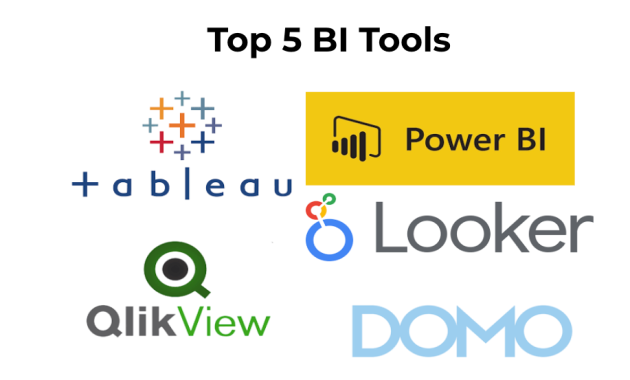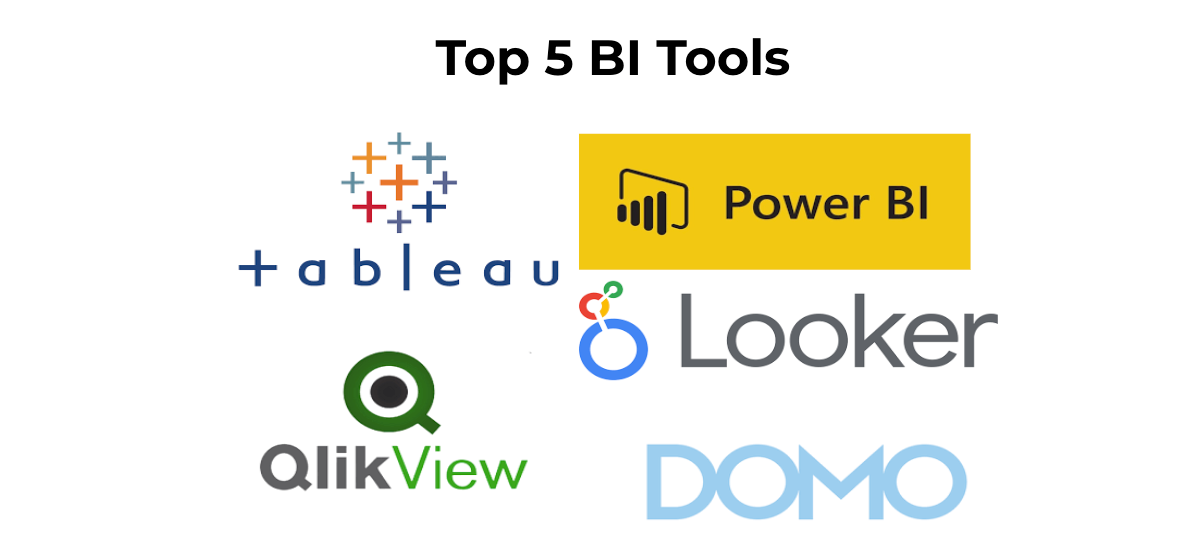
How BI Tools Help You Improve Safety: Data-Driven Strategies for a Safer Workplace
In today’s fast-paced business environment, ensuring workplace safety is paramount. Accidents and incidents not only jeopardize employee well-being but also lead to significant financial losses, reputational damage, and legal liabilities. To proactively address these challenges, organizations are increasingly turning to Business Intelligence (BI) tools. These powerful software solutions offer a data-driven approach to safety management, allowing businesses to identify risks, predict potential hazards, and implement targeted interventions. This article delves into how BI tools help you improve safety, exploring the specific applications, benefits, and real-world examples of their impact.
Understanding the Role of BI in Safety Management
Business Intelligence tools are designed to collect, analyze, and visualize data from various sources. In the context of workplace safety, this data can include incident reports, near-miss observations, safety audit results, employee training records, and environmental monitoring data. By aggregating and analyzing this information, BI tools provide valuable insights that can be used to improve safety performance. The tools transform raw data into actionable intelligence, enabling organizations to move beyond reactive measures and adopt a proactive approach to safety management.
Data Collection and Integration: The Foundation of Safety Intelligence
The effectiveness of BI tools hinges on the quality and completeness of the data they analyze. A robust data collection and integration strategy is crucial. Organizations must identify all relevant data sources, establish standardized data formats, and implement processes for data cleansing and validation. This includes integrating data from various systems, such as Human Resources Information Systems (HRIS), Enterprise Resource Planning (ERP) systems, and specialized safety management software. The ability to integrate disparate data sources is a key advantage of BI tools, providing a holistic view of safety performance.
Identifying and Analyzing Safety Risks
One of the primary ways BI tools help you improve safety is by facilitating the identification and analysis of safety risks. By analyzing historical data, these tools can reveal patterns and trends that might not be apparent through manual analysis. For instance, BI tools can identify:
- High-Risk Areas: Pinpoint locations with a high frequency of incidents or near misses.
- Common Causes: Uncover the root causes of accidents, such as unsafe work practices or equipment failures.
- Employee Demographics: Identify specific employee groups or departments with higher incident rates.
- Time-Based Trends: Analyze incident frequency over time to detect seasonal patterns or the impact of safety initiatives.
This data-driven approach enables organizations to prioritize their safety efforts and allocate resources effectively. By focusing on the most critical risks, companies can maximize their impact on safety performance.
Predictive Analytics and Proactive Safety Measures
Beyond analyzing historical data, advanced BI tools can leverage predictive analytics to forecast potential safety hazards. By employing statistical models and machine learning algorithms, these tools can identify factors that increase the likelihood of accidents. This proactive approach allows organizations to take preventative measures before incidents occur. For example, predictive analytics can be used to:
- Predict Equipment Failures: Analyze maintenance records and sensor data to anticipate equipment malfunctions.
- Forecast Near Misses: Identify conditions that contribute to near misses and take corrective action.
- Assess Employee Risk: Evaluate employee behaviors and work environments to identify potential hazards.
By anticipating potential problems, organizations can implement targeted interventions, such as enhanced training, improved equipment maintenance, or modifications to work processes. This proactive approach is a key component of how BI tools help you improve safety.
Real-time Monitoring and Reporting
BI tools also enable real-time monitoring of safety performance. By connecting to sensors, cameras, and other data sources, these tools can provide up-to-the-minute information on workplace conditions. This real-time visibility allows for immediate responses to potential hazards. For instance, BI tools can:
- Monitor Environmental Conditions: Track temperature, air quality, and other environmental factors that could impact safety.
- Detect Unsafe Behaviors: Use video analytics to identify employees not following safety protocols.
- Provide Instant Alerts: Generate alerts when hazardous conditions are detected, allowing for immediate intervention.
Furthermore, BI tools automate the generation of safety reports and dashboards. These reports provide a clear and concise overview of safety performance, allowing managers to quickly assess progress and identify areas for improvement. Real-time monitoring and reporting are essential components of a comprehensive safety management program.
Improving Training and Employee Engagement
BI tools can also play a crucial role in improving employee training and engagement. By analyzing data on incident causes and near misses, organizations can identify gaps in training programs. They can then tailor training content to address specific risks and improve employee knowledge and skills. Furthermore, BI tools can be used to:
- Track Training Completion: Monitor employee participation in safety training programs.
- Assess Training Effectiveness: Evaluate the impact of training on safety performance.
- Personalize Training Programs: Tailor training content to the specific needs of different employee groups.
By leveraging data to improve training programs, organizations can enhance employee awareness of safety risks and promote a culture of safety. Increased employee engagement in safety initiatives is a direct result of how BI tools help you improve safety.
Measuring the ROI of Safety Initiatives
Investing in safety initiatives requires a clear understanding of their return on investment (ROI). BI tools provide the data needed to measure the effectiveness of safety programs. By tracking key performance indicators (KPIs), such as incident rates, lost-time injuries, and workers’ compensation costs, organizations can assess the financial impact of their safety efforts. This data-driven approach allows companies to:
- Quantify Cost Savings: Calculate the reduction in costs associated with fewer accidents and incidents.
- Demonstrate the Value of Safety: Show the financial benefits of investing in safety programs.
- Optimize Safety Spending: Allocate resources to the most effective safety initiatives.
Measuring the ROI of safety initiatives is essential for justifying investments and ensuring that safety programs are achieving their intended goals. BI tools are crucial for this process.
Case Studies: Real-World Examples
Several organizations have successfully implemented BI tools to improve safety performance. For example, a manufacturing company used BI to analyze incident data and identify a pattern of injuries related to a specific machine. They then implemented modifications to the machine and provided additional training to employees. As a result, the company saw a significant decrease in injuries and a reduction in workers’ compensation costs. Another example involves a construction company that used BI tools to monitor employee compliance with safety protocols. By analyzing video footage and incident reports, the company identified areas where employees were not following safety procedures. They then implemented targeted training and disciplinary measures, leading to a reduction in safety violations.
Choosing the Right BI Tools
Selecting the right BI tools is crucial for success. Organizations should consider their specific needs and requirements when evaluating different software solutions. Key factors to consider include:
- Data Integration Capabilities: The ability to connect to various data sources.
- Data Analysis Features: The capabilities for analyzing and visualizing data.
- Reporting and Dashboarding: The ability to generate clear and concise reports.
- User-Friendliness: The ease of use for employees with varying levels of technical expertise.
- Scalability: The ability to handle growing data volumes.
Organizations should also consider the cost of the software, the availability of training and support, and the vendor’s reputation. Choosing the right BI tools is an important step in the journey to improving safety.
Challenges and Considerations
While BI tools offer significant benefits, there are also challenges to consider. These include the need for data quality, the complexity of data integration, and the potential for data privacy concerns. Organizations must ensure that data is accurate, complete, and secure. They must also address any ethical considerations related to data collection and analysis. Furthermore, organizations need to have skilled personnel to manage and analyze the data. Addressing these challenges is essential for the successful implementation of BI tools for safety management.
The Future of Safety: Data-Driven Insights
The use of BI tools in safety management is constantly evolving. As technology advances, organizations can expect to see even more sophisticated tools and techniques for improving safety performance. Artificial intelligence (AI) and machine learning (ML) are poised to play an increasingly important role in safety analysis and prediction. These technologies can automate data analysis, identify hidden patterns, and provide even more accurate predictions of potential hazards. The future of safety is data-driven, and BI tools will continue to be at the forefront of this transformation. By embracing data-driven strategies, organizations can create safer workplaces and protect their most valuable assets: their employees.
In conclusion, BI tools are a powerful asset in modern safety management. They enable organizations to move beyond reactive measures and adopt a proactive, data-driven approach. By collecting, analyzing, and visualizing safety data, these tools provide valuable insights that can be used to identify risks, predict potential hazards, and implement targeted interventions. The benefits of using BI for safety include improved employee well-being, reduced financial losses, and enhanced organizational reputation. As organizations continue to prioritize workplace safety, the use of BI tools will only grow. This will lead to safer, more productive, and more resilient workplaces. The integration of BI tools will help you improve safety, making it a strategic imperative for organizations across all industries. [See also: The Role of Technology in Workplace Safety]

